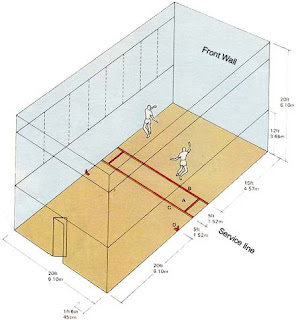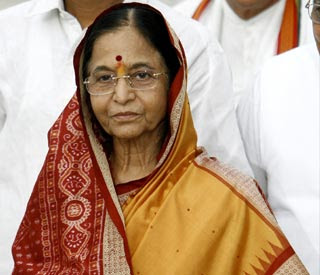History of soccer and rugby
ORIGIN: Carnival football match
It was also called the football crowd, it was actually a closer game of rugby, both the toughness as the ability to touch and carry the ball with your hands.
The first version of soccer was developed in the countries of the British Isles, and already there are reports of this in the eighth century AC The Anglo-Saxons people took the sport very quickly from the first visit by the Roman legionaries to England. They developed in an amazing way. For the first time in such a distant time, it had the concept of leagues in which participating teams representing towns and villages competed with each other.
They practiced a rudimentary form, was a "mass meeting", without limiting the number of participants. There were no strict rules and was much more violence, according to an ancient handbook from Workington in England, "everything was permitted to take the ball to the target with the exception of murder and manslaughter." (Source FIFA) The "Shrovetide Football", is still practiced today Mardi Gras traditionalists in some centers, such as Ashbourne, but in a much less abrupt and without the heavy casualties that occurred in past centuries
The game in England prospered greatly from the eighth century. It was incredibly popular among the working classes and had considerable regional variations across the country. The games were usually violent and disorganized affairs with any number of players, it was not uncommon for more than a hundred people participated in one game. By the eleventh century often played between rival villages and the court could be an incredibly large area. The playing field was not defined and included the streets, fields, village squares and any place where the ball was taken.
In the early twelfth century, during the reign of Edward II, the game was already very popular in London, but was manifested as a rude sport , sticking a bad conduct by its members, the level of violence was astonishing. Opponents were beaten with fists or feet and the players were injured regularly. In addition to any bodily injury occurred, were destroyed countless elements of the countryside in the course of a match. Fields and crops were ruined, like fences and hedges. The damage also reach the houses and businesses within the main streets of the village (or wherever the game continued on its course).
For people living in cities, the proto football was still a foreign concept and considered a "rural custom." But the second half of the twelfth century football was established in London. Prior to 1175 an annual competition was established in the calendar and every Shrove Tuesday game created huge interest and expectation.
The urban development of the game is not well known but some records cite the violent nature of play within cities, there is even a mention of a player who was stabbed to death by an opponent
The popularity and violence of this primitive soccer, played in streets, villages, fields and fields can be measured from the decrees and laws that attempted to ban it. Because of the way rough and brutal as it was played numerous complaints generated, especially the merchants whose stores were damaged by street players, and parents whose children were severely injured in the games. In 1314, reaching alarming proportions damage, prompted the mayor of London banned it completely with imprisonment. In 1331, King Edward III issued a decree energetic game trying to eliminate the cause public scandal.
There are credible accounts stating that the British soldiers played with the severed head of an enemy. In the Middle Ages there were many knights obsessed with ball games, including Richard the Lionheart, who came to propose to the Muslim leader Saladin, who resolve their issues on the ownership of Jerusalem with a ball game.
During the Hundred Years War against France (1338-1453), forbade the Saxon kings in order to prevent young people devote energy to this game directly instead of preparing for war. A famous decree of 1424 of James I, King of Scotland, states that "no man should play football."
In the early sixteenth century begins the domain of Puritanism in England, who frowns football and theater. Are imposed entertainment on Sundays without which there can be no theater or football. In Derby, the authorities should resort to counter-insurgency laws to prevent people continue playing the game. But nothing and nobody could stop the game spread like wildfire.
During the following century, the extraordinary popularity of the game among humble people kept him alive, even at the cost of camps and edicts issued by kings and queens who tried to stop it anyway. It was, without doubt, the most popular of all the games people practicing the people and soldiers during the seventeenth century.
In another view, the British lawyer Richard Mulcaster begins to ponder the game as a form of education, football touts the positive in schools, calling delete the violent part of it, to regulate the game laws and judges to include monitor compliance with the regulations. By joining schools start a regulatory process, since the duration of each game until the number of players per side as the restriction to aggression.
By the nineteenth century, the popularity of the game, yet genuinely could not call soccer, was so great that it could not be ignored and It began to practice in public schools. But it was still a hard game, full of violence, where players could hit the opponent's legs with no problems. In addition, a variant of the game for some time accepted that the player could take the ball with his hands. This variant is practiced especially in the Rugby School, from which derive the name of this sport that the hard shaved own forms of its history.
In 1863, at the University of Cambridge, a group of enthusiastic educators established the first rules of football, prohibiting the use of hands and trying to play down his primal violence. Thus was born the modern football and rugby finally separated. On 23 October the same year can be considered the birthday of football. It was in the Freemason's Tavern London, where he founded the "Association football in England." Then followed that of Scotland (1873), Wales (1875) and Ireland (1880)
The first version of soccer was developed in the countries of the British Isles, and already there are reports of this in the eighth century AC The Anglo-Saxons people took the sport very quickly from the first visit by the Roman legionaries to England. They developed in an amazing way. For the first time in such a distant time, it had the concept of leagues in which participating teams representing towns and villages competed with each other.
They practiced a rudimentary form, was a "mass meeting", without limiting the number of participants. There were no strict rules and was much more violence, according to an ancient handbook from Workington in England, "everything was permitted to take the ball to the target with the exception of murder and manslaughter." (Source FIFA) The "Shrovetide Football", is still practiced today Mardi Gras traditionalists in some centers, such as Ashbourne, but in a much less abrupt and without the heavy casualties that occurred in past centuries
The game in England prospered greatly from the eighth century. It was incredibly popular among the working classes and had considerable regional variations across the country. The games were usually violent and disorganized affairs with any number of players, it was not uncommon for more than a hundred people participated in one game. By the eleventh century often played between rival villages and the court could be an incredibly large area. The playing field was not defined and included the streets, fields, village squares and any place where the ball was taken.
In the early twelfth century, during the reign of Edward II, the game was already very popular in London, but was manifested as a rude sport , sticking a bad conduct by its members, the level of violence was astonishing. Opponents were beaten with fists or feet and the players were injured regularly. In addition to any bodily injury occurred, were destroyed countless elements of the countryside in the course of a match. Fields and crops were ruined, like fences and hedges. The damage also reach the houses and businesses within the main streets of the village (or wherever the game continued on its course).
For people living in cities, the proto football was still a foreign concept and considered a "rural custom." But the second half of the twelfth century football was established in London. Prior to 1175 an annual competition was established in the calendar and every Shrove Tuesday game created huge interest and expectation.
The urban development of the game is not well known but some records cite the violent nature of play within cities, there is even a mention of a player who was stabbed to death by an opponent
The popularity and violence of this primitive soccer, played in streets, villages, fields and fields can be measured from the decrees and laws that attempted to ban it. Because of the way rough and brutal as it was played numerous complaints generated, especially the merchants whose stores were damaged by street players, and parents whose children were severely injured in the games. In 1314, reaching alarming proportions damage, prompted the mayor of London banned it completely with imprisonment. In 1331, King Edward III issued a decree energetic game trying to eliminate the cause public scandal.
There are credible accounts stating that the British soldiers played with the severed head of an enemy. In the Middle Ages there were many knights obsessed with ball games, including Richard the Lionheart, who came to propose to the Muslim leader Saladin, who resolve their issues on the ownership of Jerusalem with a ball game.
During the Hundred Years War against France (1338-1453), forbade the Saxon kings in order to prevent young people devote energy to this game directly instead of preparing for war. A famous decree of 1424 of James I, King of Scotland, states that "no man should play football."
In the early sixteenth century begins the domain of Puritanism in England, who frowns football and theater. Are imposed entertainment on Sundays without which there can be no theater or football. In Derby, the authorities should resort to counter-insurgency laws to prevent people continue playing the game. But nothing and nobody could stop the game spread like wildfire.
During the following century, the extraordinary popularity of the game among humble people kept him alive, even at the cost of camps and edicts issued by kings and queens who tried to stop it anyway. It was, without doubt, the most popular of all the games people practicing the people and soldiers during the seventeenth century.
In another view, the British lawyer Richard Mulcaster begins to ponder the game as a form of education, football touts the positive in schools, calling delete the violent part of it, to regulate the game laws and judges to include monitor compliance with the regulations. By joining schools start a regulatory process, since the duration of each game until the number of players per side as the restriction to aggression.
By the nineteenth century, the popularity of the game, yet genuinely could not call soccer, was so great that it could not be ignored and It began to practice in public schools. But it was still a hard game, full of violence, where players could hit the opponent's legs with no problems. In addition, a variant of the game for some time accepted that the player could take the ball with his hands. This variant is practiced especially in the Rugby School, from which derive the name of this sport that the hard shaved own forms of its history.






























